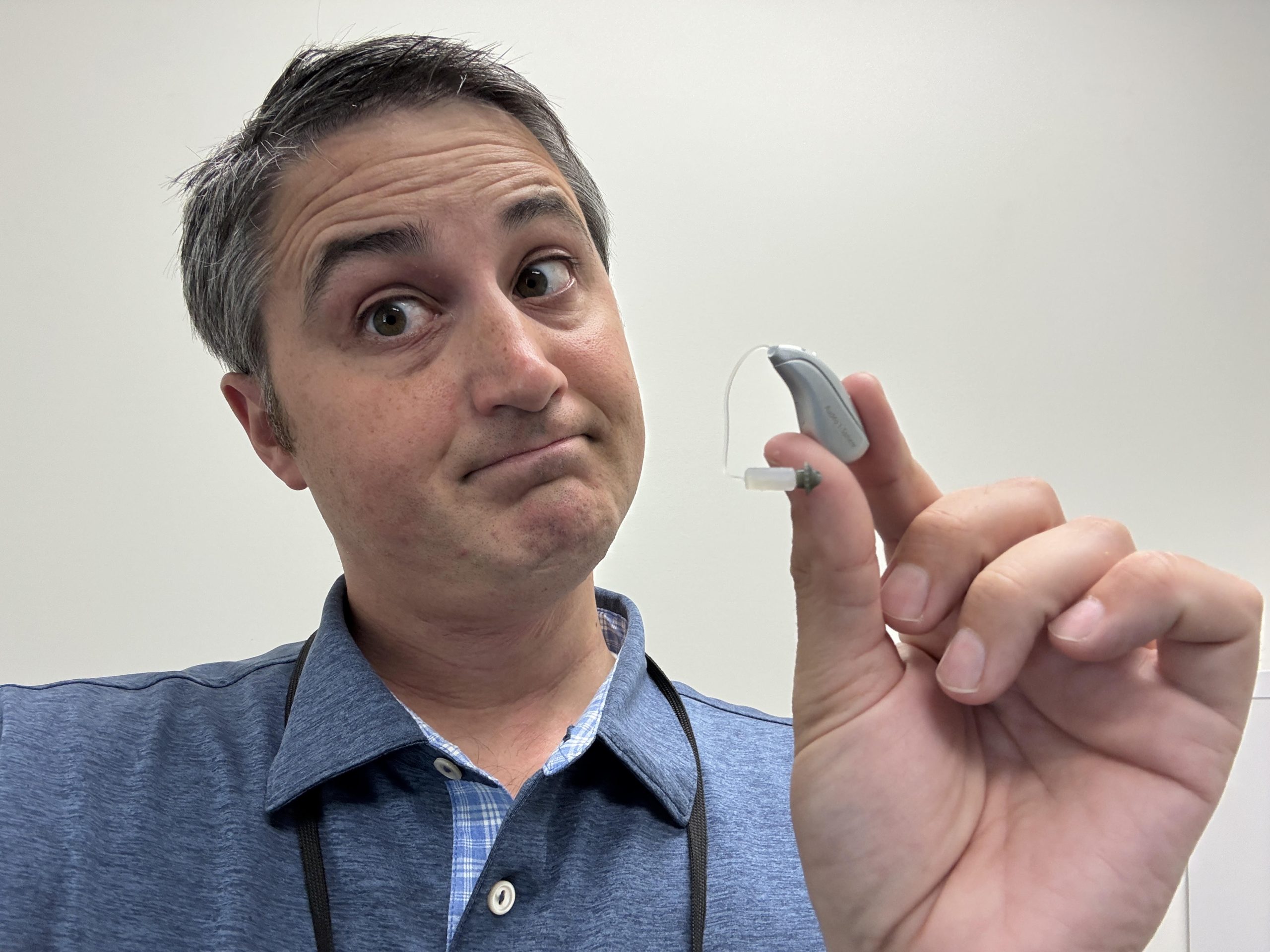Recently, a Facebook user shared a serious concern regarding Phonak hearing aids and their behavior with an iPhone. They complained that the devices were not “Made for iPhone” (MFi) and would randomly hijack media playback, sometimes dangerously while driving.
This article will help clarify the difference between Phonak Bluetooth hearing aids and MFi hearing aids, explain why these issues occur, and offer practical solutions you can implement immediately.
What Does “Made for iPhone” (MFi) Mean?
Apple’s MFi program refers to hearing aids that are certified to work seamlessly with Apple devices like the iPhone, iPad, and Apple Watch. MFi hearing aids offer:
- Low-latency audio streaming
- Native integration with iOS features like Live Listen
- Automatic switching between Apple devices
Brands that support MFi include Oticon, ReSound, Widex, Signia, and Starkey. Learn more in our guide: Best Hearing Aids for Background Noise.
Why Phonak Hearing Aids Are Not MFi
Phonak has intentionally taken a different route. Instead of using Apple’s MFi protocol, Phonak uses universal Bluetooth Classic and Bluetooth LE Audio (for MyPhonak app use only). Using Bluetooth Classics allows their devices to work with both iPhones and Android phones and flip phones.
However, this comes with trade-offs:
- No Apple-specific features like Live Listen or iCloud pairing
- More user settings required for optimal performance
- Greater chance of Bluetooth auto-switching issues
If you need help pairing or understanding your model, see our guide: Phonak Hearing Aids: Common Questions Answered.
Bluetooth Auto-Switching Issues: Explained
The Facebook user reported that their Phonak hearing aids were hijacking media playback, overriding speakers, CarPlay, and even Wi-Fi devices. This behavior is usually caused by how iOS handles audio routing and Bluetooth priorities.
Key iPhone Settings to Check
- Call Audio Routing: Settings → Accessibility → Touch → Call Audio Routing → Set to “Bluetooth Headset”
- Disable Auto-Answer: Same menu as above; turn off Auto-Answer Calls
- Control Bluetooth Device List: Remove unused BT devices that might interfere with routing
We also recommend disabling Tap Control if you accidentally trigger audio playback. See our article: How to Stop Phonak Hearing Aids from Auto-Answering Phone Calls.
Comparison: Phonak vs. MFi Hearing Aids
| Feature | Phonak Bluetooth | MFi Hearing Aids |
|---|---|---|
| Works with Android | ✅ | ❌ |
| Works with iPhone | ✅ (via standard Bluetooth) | ✅ (via MFi) |
| Auto-switch between Apple devices | ❌ | ✅ |
| Low-latency streaming | Varies | Yes |
| Manual settings required | Often | Rarely |
What to Do If You’re Frustrated with Phonak
Before returning or replacing your hearing aids, try:
- Calling Phonak Bluetooth support: 1-800-777-7333 or 1-800-679-4871 if they are VA issued hearing aids.
- Visiting your audiologist for a Bluetooth settings check
- Adjusting your iPhone media settings manually
Don’t forget to update your iPhone and Phonak firmware. Software updates often resolve these Bluetooth conflicts.
Final Thoughts
Phonak hearing aids are not made for iPhone—but that’s not necessarily a bad thing. Their universal Bluetooth system provides broad compatibility, but requires more user customization. If you’re willing to learn the settings or get help from your provider, they can perform reliably.
Want to learn more? Explore our detailed guides on ITE vs. BTE Hearing Aids or How Long It Takes to Adjust to Hearing Aids.
Frequently Asked Questions
Are Phonak hearing aids Made for iPhone?
No. Phonak hearing aids use a universal Bluetooth system and are not certified under Apple’s Made for iPhone (MFi) program.
Why do my Phonak hearing aids randomly switch audio sources on iPhone?
This usually happens due to iPhone settings like Call Audio Routing or Auto-Answer being incorrectly set. Adjusting these can fix the problem.
Can I use Phonak hearing aids with Android phones?
Yes. Phonak’s universal Bluetooth approach supports both iPhones and Android smartphones.
Written by: Jonathan Javid, Au.D. — Clinical audiologist and founder of Hearing Insider.

